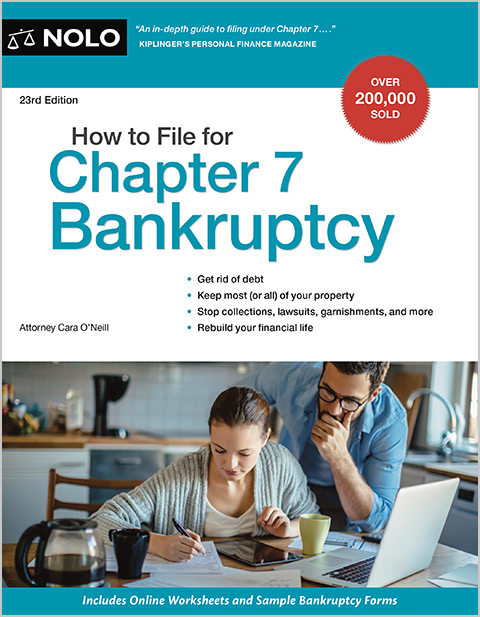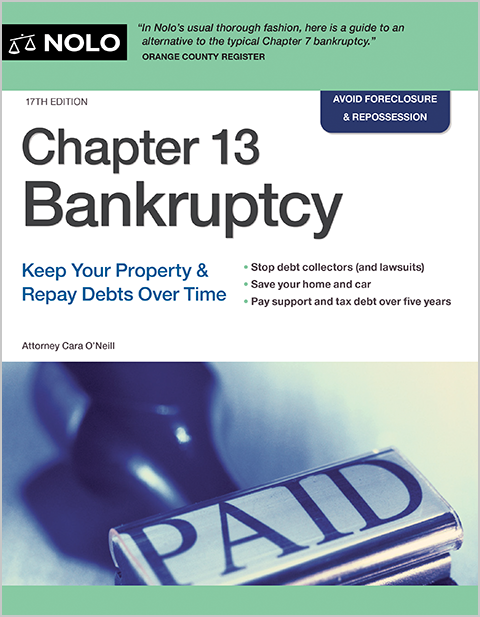Chapter 12 bankruptcy is a reorganization bankruptcy for family farmers and fisherman.
Chapter 12 bankruptcy helps "family farmers" and "family fishermen" struggling with debt continue operations and avoid foreclosure or a business shutdown. Introduced as a temporary way to help relieve financial pressures on family farmers and fishermen during the mid-1980s, Chapter 12 became a permanent bankruptcy chapter in 2005.
Chapter 12 is a better fit for family farmers and fishermen than a typical business Chapter 11 because it uses the more straightforward Chapter 13 process while allowing Chapter 12 filers to have significantly more debt than they could in a Chapter 13 case. Learn about Chapter 13 debt limitations.
Qualifying for Chapter 12 Bankruptcy
Only family farmers and fishermen can file for bankruptcy under Chapter 12. If you plan to file as an individual, either by yourself or with a spouse, here are the requirements you'll need to meet:
- have a farming or commercial fishing operation
- have "regular annual income" (stable and predictable seasonal income is acceptable)
- 50% of the filer's gross income must be from farming or commercial fishing operations
- a farmer's total debts can't exceed $12,562,250, 50% of which must be due to farming operations, and
- fishermen can't have more than $2,568,000 in debt, 80% of which must be due to the fishing operation.
Partnerships and corporations can file for bankruptcy under Chapter 12 if a single family owns more than 50% of the stock or equity. (Debt figures exclude home mortgages and are valid for cases filed between April 1, 2025, and March 31, 2028.)
How Chapter 12 Bankruptcy Works
The most important benefit of filing for Chapter 12 is the debt relief, which allows family farmers and fishermen to continue farming or fishing operations. Each case proceeds in a predictable fashion. Here's what you can expect.
1. Take a Credit Counseling Class
If you file as an individual instead of filing under a business name, you must attend a credit counseling course before submitting your bankruptcy paperwork to the court. You'll include the completion certificate with the bankruptcy petition.
2. File the Chapter 12 Case
A Chapter 12 case begins with the case filing. The "automatic stay" order triggered by the bankruptcy case stops most creditors from calling, sending letters, and pursuing debt collection lawsuits. Learn more about the automatic stay and its limitations.
Soon after, the court appoints a bankruptcy trustee to review documents, monitor operations, and conduct a meeting known as the "meeting of creditors," "creditors meeting," or "341 meeting." The trustee also collects plan payments and disperses them to creditors.
3. Give the Trustee Documents and Go to the Meeting of Creditors
Before the meeting, you'll provide bank statements, profit and loss statements, tax returns, and other financial documents required in a bankruptcy case for the trustee to review. The trustee will verify your identity at the meeting and ask questions about the bankruptcy filing. Creditors can also ask questions.
4. File Your Proposed Chapter 12 Plan
You'll have 90 days to file your proposed three-year plan to pay creditors, but you can ask the court to extend the time. The court can also give you up to five years to pay if you can show "cause" or good reason. For instance, most courts approve a five-plan if you need more time to pay child support or alimony arrearages.
Most filers try to submit the proposed plan before the 341 meeting. If you do, you'll have an opportunity to discuss potential problems with the trustee at the meeting of creditors and make needed adjustments. Learn more about the plan in "Elements of The Chapter 12 Repayment Plan" below.
5. Attend the Chapter 12 Plan Confirmation Hearing
A proposed plan must be approved or "confirmed" by the bankruptcy court at a hearing set within 45 days of the plan's filing. If the debtor, trustee, and creditors can't resolve a problem, the judge will consider each side's argument at the hearing, although most judges rely heavily on the trustee's recommendations.
6. Receive Your Chapter 12 Discharge
The court will continue monitoring the case until you make the required payments. If you file as an individual, you'll also need to complete a debtor education class before the bankruptcy court closes the matter and grants a debt discharge that eliminates debts in accordance with your plan.
7. Other Ways a Chapter 12 Case Can End
The court will dismiss the case without a discharge if the debtor can't obtain plan confirmation or make the required payments. A debtor also can elect to dismiss a Chapter 12 case or convert it to a Chapter 7 liquidation.
Elements of the Chapter 12 Repayment Plan
The essential parts of a Chapter 12 repayment plan include the following.
Required plan payments. The debtor must turn over all "disposable income" to the Chapter 12 trustee during the plan period. "Disposable income" in a Chapter 12 case is the difference between the revenue generated by the debtor's farm or fishing operations and the amount reasonably needed to cover business expenses and expenses incurred in the maintenance and support of the debtor's family.
Mortgages and other secured claims. One advantage of Chapter 12 is that debtors can "cram down" or reduce secured debt, such as farm mortgages and boat loans. Mortgage lenders and other secured creditors must receive the value of the collateral securing the debt. Any balance owed over the collateral's value becomes an "unsecured debt," often paid little or nothing in Chapter 12 cases. Secured debt payments can extend beyond the plan's term, and interest can be reduced to the current market rate.
Trustee fee. Trustees receive a percentage of the funds dispersed to creditors.
Discharge of debt. Chapter 12 plans must meet the "best interests of creditors" test. Under the "best interests" test, creditors must receive at least as much under a Chapter 12 plan as they would in Chapter 7 bankruptcy. If the plan meets the "best interests" test, unsecured creditors can be paid pennies on the dollar or nothing.
Need More Bankruptcy Help?
Did you know Nolo has made the law accessible for over fifty years? It's true, and we wholeheartedly encourage research and learning. You can find many more helpful bankruptcy articles on Nolo's bankruptcy homepage. Information needed to complete the official downloadable bankruptcy forms is on the Department of Justice U.S. Trustee Program website.
However, online articles and resources can't address all bankruptcy issues and aren't written with the facts of your particular case in mind. The best way to protect your assets in bankruptcy is by hiring a local bankruptcy lawyer.

